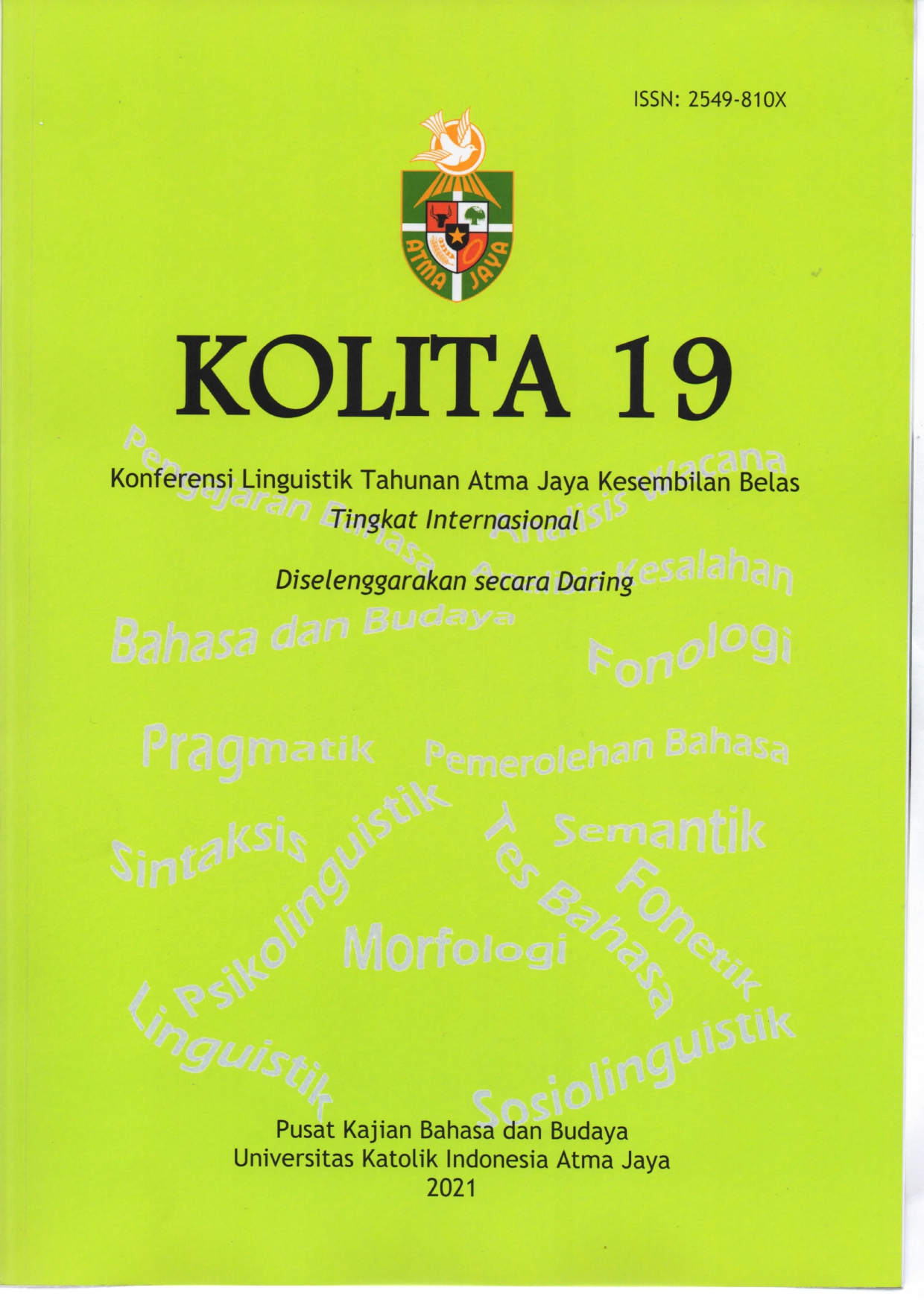SEMANTIC EQUIVALENCE IN ENGLISH APPOSITIVES
Keywords:
appositives, anchor, semantic equivalence, appositional constructions, sense relationsAbstract
This research-based article discusses semantic equivalence in English appositives. This topic discussion has a particular power of attraction to insightfully investigate. Semantic equivalence provides quality of relatedness between an anchor and its appositive in a construction of apposition. If perceived from the syntactic viewpoint only, the existence of an appositive can be omitted due to the additional information seemingly deemed not to be important but if perceived from semantic viewpoint, it will serve something different in terms of the quality of information. The appositive, viewed from the semantic point of view, offers meaningful bonus information for its anchor (Gunawan, 2020). This information may clarify the anchor through various forms of equivalence. Therefore, this research serves two aims: 1) to identify the types of semantic equivalence in the appositional constructions, and 2) to explain the sense relations in the appositional constructions. The data sources are taken from English printed media within three levels of distributional coverage, i.e. national coverage that is daily news The Jakarta Post, regional coverage that is monthly magazine Reader’s Digest, and international coverage, namely, weekly magazine TIME. The data are analysed through employing the method of qualitative research, that is, the method presenting descriptive data, both written and oral data. To analyse such descriptive data, the distributional method of analysis with the following techniques is used, namely, the deleting technique, the extracting technique, the intruding/inserting technique and the substituting technique. The results of this research uncover that: 1) four types of semantic equivalences are found, i.e., appellation, identification, designation and reformulation; 2) the sense relations in the constructions of apposition cover two sense relations: syntagmatic (in presentia) relation and paradigmatic (in absentia) relation. By syntagmatic relation, appositional construction has syntactic linier relatedness. By paradigmatic relation, the constituents in the constructions of appositions have sense closeness so as they are substitutable.






